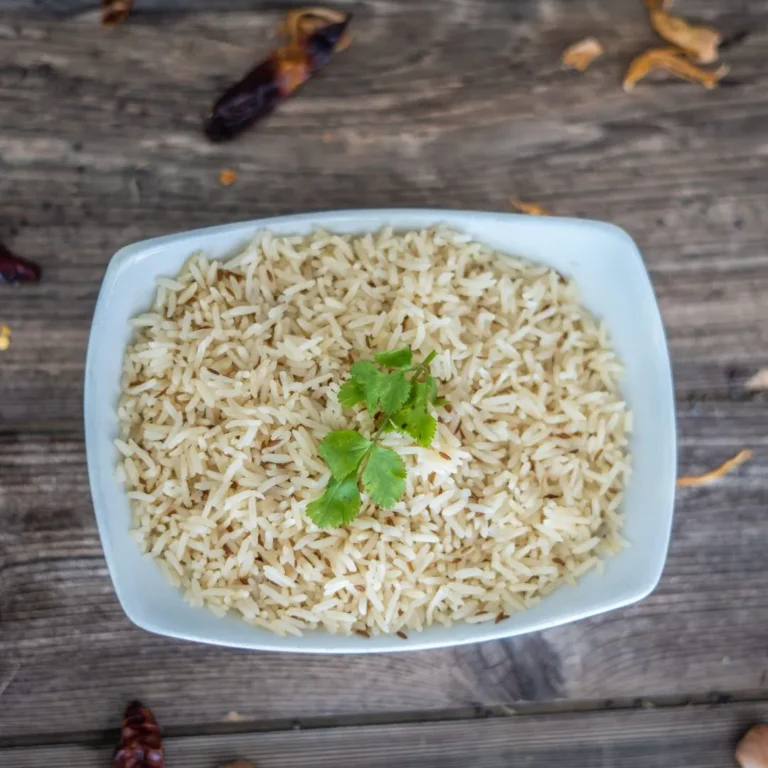Why did India Ban The Export of Non-Basmati Rice?

What is Non-Basmati Rice?
Non-basmati rice is typically grown and cultivated in India’s northern and southern areas. It is produced in the coastal plains and nurtured with well-processed milling. With the diverse flavors and scents of one another, the rice variety has unique characteristics. Non-basmati rice is available in all sizes and shapes. For example, some are short and thick and, some are long and thin, some are like beads, and some might be round. Moreover, this type of rice has no qualities similar to basmati rice.
India's Growing Presence in the Global Rice Market
India has earned the reputation of being the world’s largest rice exporter in the past decade. Earlier, poor yields and production led India to be the leading rice importer throughout the 1960s and early 1970s. By the late 1970s, India had extensively earned self-sufficiency and, till the 2000s had become a net rice exporter.
From 2010 onwards, rice production has grown by 40% (by over 40 million tons, to a maximum of 136 million tons, making it the second largest producer after China’s 146 million tons). Moreover, India’s exports increased through the same period by 20 million tons. (China’s rice exports are a fragment of India’s.)
India's New Ban on Non Basmati Rice Exports
On July 20, India declared that it would limit non-basmati rice exports to balance domestic rice prices that had surged over 30% since October 2022. Moreover, the ban would interrupt overseas grain sales with almost an ‘immediate effect,’ the Government declared, and is estimated to include over 75% to 80% of India rice exports.
Furthermore, the ban hugely impacts the global rice market, whose prices have increased by 15% to 20% since September 2022. It happened after a time of relative stability in the first part of that year, even when prices of other grains were rising because of the Russia-Ukraine war.
As India has earned its reputation as the world’s largest rice exporter, any move it makes can seriously affect the global market. However, India was approached on its rice export policy by some WTO members, directed by the US, who insisted that the rice export ban is a massive drawback for countries heavily dependent on imports, especially during such crises, as stated for about 40% of global exports. The other members asking India about the ban included Australia, New Zealand, Japan, Canada, Thailand, Switzerland, the European Union, and the UK.
Why was the Export Ban Imposed?
When India banned the export of non-basmati rice variants, it triggered an uproar in the global rice community. Based on the reports, India explained that the ban was established to benefit domestic food security and was occasionally inspected to permit required changes as per the domestic demand and supply scenarios. In fact, it was highly needed to secure the food security of its 1.4 billion people.
However, exports of non-basmati grains are about 25% to 30% of rice exports. Last year, when prices started rising in the global market, the Government imposed a 20% duty on the export of rice, but exports continued to hike. Besides, there was a full-blown ban on the export of broken rice, and rice buffer stock ran low.

Has India's Restrictions Raised the Prices of Rice Worldwide?
Right after India banned the export of non-basmati rice, there was a quick hike in the price throughout the market. However, in the following months, there was a slight price reduction, but it was still high compared to the pre-ban period.
According to the Rice Outlook of the Economic Research Service, US Department of Agriculture, ‘Recently, quotes on trading prices for most grades of regular (neither parboiled nor aromatic) whole-grain milled rice from Thailand lowered 5% to 6%, mainly because of a weaker baht. Around October 10, Thailand’s 100% Grade B long-grain milled rice for export was estimated to $595 per ton, down $34 from the week ending September 12 but still over $60 per ton from early July, before India imposed export ban in late July and August. Besides, Thailand’s rise hiked quickly at the same time, majorly in response to India’s export ban on regular-milled white rice.’
Where do Indian Rice Exports Go?
Iran is known to be the largest export destination for Indian rice with about 10.7% of the total exports going there. They bring about $1.2 billion a year. Next in line is Saudi Arabia, with about $1 billion in India rice exports, adding up to 9.2% of the total. China is positioned at 3rd with $0.7 billion or 6.2% of Indian rice exports.
Indian rice imports consist of a massive share of some African countries. Benin imports about $0.6 billion worth, and Senegal and Cote D’Iviore imports about $0.4 billion of Indian rice. However, during the ban, India permitted non-basmati white rice exports to a few countries. The nation has decided to stop restrictions on the export of non-basmati white rice to certain countries, as mentioned in the government notification released recently.
The few countries allowed for these rice exports include Malaysia, Nepal, Philippines, Ivory Coast, Seychelles, Cameroon, and the Republic of Guinea. It was announced after India’s first statement on its ban on non-basmati white rice exports, which started in July. Furthermore, the country later applied a 20% duty on parboiled rice exports. All in all, India’s decision to begin exporting non-basmati rice to these countries is likely to lower pressure on the global market and also reduce the price to some extent.
Conclusions
As a result, India’s strict decision to restrict exports of non-basmati rice variants ignites a new vulnerability in commodities markets that threatens already fragile global food security. Most features, from atmospheric conditions in the coming months, to the precise information of the export ban to the reactions of other rice exporters, will decide what happens and how serious the consequences are.
Everyone seems to be hopeful that the lessons of the last price hikes, which had long-lasting effects on global food insecurity, hunger, nutrition, and poverty, will play a prominent role in trade policy decision-making and prevent countries from choosing a similar path of putting export restrictions.


